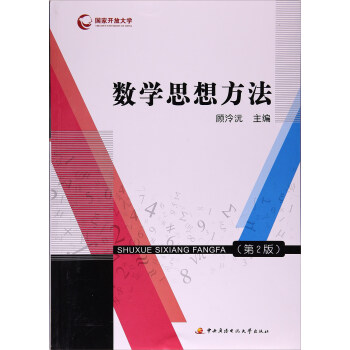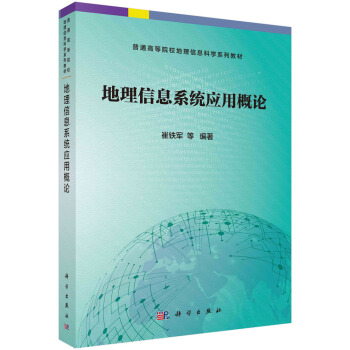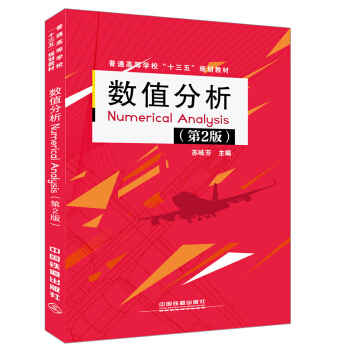

具體描述
編輯推薦
本書采用中、英兩種語言編寫,各章都配有大量的習題及上機實驗題目,並附有部分習題的參考答案及數學專業軟件Mathematica和Matlab的簡介。內容簡介
本書介紹瞭科學計算中常用數值分析的基礎理論及計算機實現方法。主要內容包括:誤差分析、插值、函數逼近、數值積分和數值微分、非綫性方程的數值解法、綫性方程組的直接解法、綫性方程組的迭代解法、常微分方程的數值解法及相應的上機實驗內容等。各章都配有大量的習題及上機實驗題目,並附有部分習題的參考答案及數學專業軟件Mathematica和Matlab的簡介。本書采用中、英兩種語言編寫,適閤作為數學、計算機和其他理工類各專業本科“數值分析(計算方法)”雙語課程的教材或參考書,也可供從事科學計算的相關技術人員參考。
作者簡介
蘇岐芳,副教授,颱州學院數學與信息工程學院副院長目錄
1 Error Analysis ......11.1 Introduction ............ 1
1.2 Sources of Errors .... 2
1.3 Errors and Significant Digits .......... 4
1.4 Error Propagation ... 8
1.5 Qualitative Analysis and Control of Errors ............ 9
1.5.1 Ill-condition Problem and Condition Number....................... 9
1.5.2 The Stability of Algorithm .. 10
1.5.3 The Control of Errors .......... 11
1.6 Computer Experiments................. 14
1.6.1 Functions Needed in the Experiments by Mathematica ...... 14
1.6.2 Experiments by Mathematica...................... 14
1.6.3 Functions Needed in the Experiments by Matlab................ 16
1.6.4 Experiments by Matlab ....... 16
Exercises 1..................... 17
2 Interpolating.......19
2.1 Introduction .......... 20
2.2 Basic Concepts ..... 21
2.3 Lagrange Interpolation ................. 22
2.3.1 Linear and Parabolic Interpolation .............. 22
2.3.2 Lagrange Interpolation Polynomial............. 24
2.3.3 Interpolation Remainder and Error Estimate....................... 25
2.4 Divided-differences and Newton Interpolation .... 29
2.5 Differences and Newton Difference Formulae..... 33
2.5.1 Differences .. 33
2.5.2 Newton Difference Formulae ...................... 35
2.6 Hermite Interpolation ................... 38
2.7 Piecewise Low Degree Interpolation.................... 42
2.7.1 Ill-posed Properties of High Degree Interpolation .............. 42
2.7.2 Piecewise Linear Interpolation .................... 43
2.7.3 Piecewise Cubic Hermite Interpolation....... 44
2.8 Cubic Spline Interpolation............ 45
2.8.1 Definition of Cubic Spline... 45
2.8.2 The Construction of Cubic Spline ............... 46
2.9 Computer Experiments................. 49
2.9.1 Functions Needed in the Experiments by Mathematica ...... 49
2.9.2 Experiments by Mathematica...................... 50
2.9.3 Experiments by Matlab ....... 56
Exercises 2................... 64
3 Best Approximation ...................68
3.1 Introduction .......... 68
3.2 Norms ................... 69
3.2.1 Vector Norms ...................... 69
3.2.2 Matrix Norms ...................... 74
3.3 Spectral Radius..... 76
3.4 Best Linear Approximation .......... 79
3.4.1 Basic Concepts and Theories....................... 79
3.4.2 Best Linear Approximation . 81
3.5 Discrete Least Squares Approximation ................ 82
3.6 Least Squares Approximation and Orthogonal Polynomials........ 87
3.7 Rational Function Approximation 94
3.7.1 Continued Fractions ............ 94
3.7.2 Padé Approximation............ 97
3.8 Computer Experiments................. 99
3.8.1 Functions Needed in The Experiments by Mathematica..... 99
3.8.2 Experiments by Mathematica.................... 100
3.8.3 Functions Needed in The Experiments by Matlab ............ 106
3.8.4 Experiments by Matlab ..... 106
Exercises 3................. 111
4 Numerical Integration and Differentiation ........114
4.1 Introduction ........ 115
4.2 Interpolatory Quadratures........... 116
4.2.1 Interpolatory Quadratures.. 116
4.2.2 Degree of Accuracy........... 117
4.3 Newton-Cotes Quadrature Formula.................... 118
4.4 Composite Quadrature Formula . 123
4.4.1 Composite Trapezoidal Rule ..................... 123
4.4.2 Composite Simpson’s Rule ....................... 124
4.5 Romberg Integration................... 125
4.5.1 Recursive Trapezoidal Rule ...................... 125
4.5.2 Romberg Algorithm .......... 126
4.5.3 Richardson’s Extrapolation ....................... 128
4.6 Gaussian Quadrature Formula .... 129
4.7 Multiple Integrals ....................... 134
4.8 Numerical Differentiation........... 135
4.8.1 Numerical Differentiation . 135
4.8.2 Differentiation Polynomial Interpolation .. 137
4.8.3 Richardson’s Extrapolation ....................... 141
4.9 Computer Experiments............... 144
4.9.1 Functions Needed in the Experiments by Mathematica .... 144
4.9.2 Experiments by Mathematica.................... 144
4.9.3 Experiments by Matlab ..... 149
Exercises 4................... 153
5 Solution of Nonlinear Equations ......................156
5.1 Introduction ........ 156
5.2 Basic Theories .... 158
5.3 Bisection Method 159
5.4 Iterative Method and Its Convergence................ 162
5.4.1 Fixed Point and Iteration ... 162
5.4.2 Global Convergence.......... 163
5.4.3 Local Convergence............ 165
5.4.4 Order of Convergence ....... 167
5.5 Accelerating Convergence.......... 168
5.6 Newton’s Method ....................... 170
5.6.1 Newton’s Method and Its Convergence .... 170
5.6.2 Reduced Newton Method and Newton’s Descent Method ....................... 172
5.6.3 The Case of Multiple Roots....................... 173
5.7 Secant Method and Muller Method .................... 174
5.7.1 Secant Method................... 174
5.7.2 Muller Method................... 175
5.8 Systems of Nonlinear Equations. 176
5.9 Computer Experiments............... 179
5.9.1 Functions Needed in the Experiments by Mathematica .... 179
5.9.2 Experiments by Mathematica.................... 180
5.9.3 Experiments by Matlab ..... 185
Exercises 5................. 188
6 Direct Methods for Solving Linear Systems ....191
6.1 Introduction ........ 192
6.2 Gaussian Elimination.................. 193
6.2.1 Basic Gaussian Elimination....................... 193
6.2.2 Triangular Decomposition. 197
6.3 Gaussian Elimination with Column Pivoting ..... 200
6.4 Methods of the Triangular Decomposition......... 202
6.4.1 The Direct Methods of The Triangular Decomposition .... 202
6.4.2 The Square Root Method .. 203
6.4.3 The Speedup Method......... 206
6.5 Analysis of Round-off Errors ..... 210
6.5.1 Condition Number............. 210
6.5.2 Iterative Refinement .......... 214
6.6 Computer Experiments............... 215
6.6.1 Functions Needed in the Experiments by Mathematica .... 215
6.6.2 Experiments by Mathematica.................... 215
6.6.3 Functions Needed in the Experiments by Matlab.............. 222
6.6.4 Experiments by Matlab ..... 222
Exercises 6................... 227
7 Iterative Techniques for Solving Linear Systems ....................230
7.1 Introduction ........ 231
7.2 Basic Iterative Methods .............. 233
7.2.1 Jacobi Method ................... 234
7.2.2 Gauss-Seidel Method ........ 236
7.2.3 SOR Method...................... 237
7.3 Iterative Method Convergence ... 238
7.3.1 Basic Theorems ................. 238
7.3.2 Some Special Systems of Equations.......... 243
7.4 Computer Experiments............... 247
7.4.1 Functions Needed in The Experiments by Mathematica... 247
7.4.2 Experiments by Mathematica.................... 247
7.4.3 Experiments by Matlab ..... 251
Exercises 7................... 255
8 Numerical Solution of Ordinary Differential Equations ............258
8.1 Introduction ........ 258
8.2 The Existence and Uniqueness of Solutions....... 260
8.3 Taylor-Series Method................. 262
8.4 Euler’s Method ... 263
8.5 Single-step Methods ................... 267
8.5.1 Single-step Methods.......... 267
8.5.2 Local Truncation Error ...... 267
8.6 Runge-Kutta Methods ................ 268
8.6.1 Second-Order Runge-Kutta Method.......... 268
8.6.2 Fourth-Order Runge-Kutta Method........... 270
8.7 Multistep Methods...................... 271
8.7.1 General Formulas of Multistep Methods... 272
8.7.2 Adams Explicit and Implicit Formulas...... 273
8.8 Systems and Higher-Order Differential Equations..................... 275
8.8.1 Vector Notation ................. 276
8.8.2 Taylor-Series Method for Systems............ 278
8.8.3 Fourth-Order Runge-Kutta Formula for Systems.............. 279
8.9 Computer Experiments............... 281
8.9.1 Functions Needed in the Experiments by Mathematica .... 281
8.9.2 Experiments by Mathematica.................... 281
8.9.3 Experiments by Matlab ..... 286
Exercises 8................... 290
Appendix ...............293
Appendix A Mathematica Basic Operations ............ 293
Appendix B Matlab Basic Operations ...................... 309
Appendix C Answers to Selected Question.............. 327
Reference..............332
前言/序言
本書第1 版齣版以來,得到瞭許多專傢、同仁及讀者的關心、支持和幫助,並提齣瞭許多寶貴意見和建議。藉再版之機,首先嚮關心本書的廣大讀者、專傢、同行和本書的各位責任編輯錶示由衷的謝意!在修訂中,為瞭更適閤當前雙語教學的需求,我們保留瞭原教材的係統和編寫風格(理論部分以中文為主,軟件實現部分以英文為主),注意吸收當前國內外教材改革中一些成功的經驗,努力體現創新教學理念,以利於激發學生自主學習,提高實踐應用能力,培養綜閤素質和創新能力。
本次再版修訂的內容主要包括以下幾方麵:
1.訂正瞭語言文字錶達方麵的不足之處,力求用詞規範,錶達確切。
2.剔除瞭個彆內容重復和煩瑣之處,使理論部分更好地體現“夠用為度”的編寫原則。
3.恰當地處理有關定理的證明和有關例題的求解方法,使其更加通俗易懂。
4.增補瞭多重積分、有理逼近、Padé逼近等內容,進一步體現教材的先進性。
5.結閤增補內容,對習題配置作瞭進一步充實、完善。
6.在實驗部分,大量增加瞭算法的Matlab 實現程序及相應的算例,以便於指導學生實踐應用。
本書由浙江颱州學院蘇岐芳副教授主編,浙江颱州學院鄭學良教授、李希文副教授和應瑋婷老師參與修訂。具體寫作分工為:第1 章、第2 章及附錄由李希文修訂;第3章由鄭學良修訂;第4章~第8章由蘇岐芳修訂;全書的計算機實驗由應瑋婷修訂。
在本書修訂過程中,浙江師範大學徐秀斌教授為本書提齣瞭許多寶貴意見,浙江海洋學院郝彥教授、硃玉輝老師及廈門理工學院陳淑萍老師,對本書的編寫都做瞭大量工作,在此一並錶示衷心感謝!
編 者
2016年10月
用戶評價
評分拿到這本書,我立刻感受到一種紮實的學術氛圍,這讓我對未來的學習充滿瞭期待。作為一名正在學習計算科學的學生,我對如何利用計算機高效地解決數學問題有著強烈的需求。我特彆希望書中能夠詳細闡述求解常微分方程初值問題和邊值問題的數值方法,例如,歐拉法、改進歐拉法、四階龍格-庫塔法的原理、收斂性和穩定性分析,以及它們在處理不同類型的微分方程時的優缺點。同時,我也非常關心書中是否會介紹一些更高級的主題,比如有限差分法、有限元法等用於求解偏微分方程的方法。我希望書中能夠提供清晰的算法描述,並輔以必要的數學證明,幫助我深入理解其背後原理。此外,如果書中能夠包含一些高質量的編程示例,展示如何在實際編程中實現這些數值算法,那將對我非常有幫助,讓我能夠更好地將理論知識轉化為實踐能力。
評分作為一個對數學分析和微積分有一定基礎的讀者,我一直渴望找到一本能夠將這些理論知識與實際計算問題巧妙結閤的書籍。這本書的齣現,無疑點燃瞭我學習的熱情。我非常好奇書中會如何引入誤差分析這個至關重要的概念,比如截斷誤差和捨入誤差的來源、量化以及如何控製。畢竟,在實際計算中,任何結果的精確度都離不開對誤差的深刻理解。我特彆希望能看到書中對數值積分和微分方法(如梯形法則、辛普森法則、歐拉方法、龍格-庫塔方法等)的詳細講解,包括它們的原理、誤差階數以及在不同精度要求下的選擇依據。同時,我也期待書中能夠涉及一些更高級的主題,比如樣條插值、最小二乘擬閤等,這些都是在數據處理和模式識彆中不可或缺的工具。如果書中還能包含一些關於算法穩定性的討論,那就更完美瞭,因為算法的有效性不僅僅在於計算速度,更在於其結果的可靠性。
評分這本《數值分析》以其嚴謹的數學語言和清晰的邏輯結構,成功地吸引瞭我。我一直對數值代數,特彆是特徵值問題的數值計算方法非常感興趣。我希望書中能夠深入探討如何求解大型稀疏綫性係統的迭代方法,比如預條件共軛梯度法,以及如何有效地估計和計算矩陣的特徵值和特徵嚮量,比如冪法、反冪法、QR算法等。我特彆期待書中能夠詳細闡述這些算法的收斂性分析,並提供相應的理論證明。此外,對於非綫性方程組的求解,書中是否會涉及一些更通用的方法,如擬牛頓法,以及如何處理其局部收斂性和全局收斂性的問題,也是我非常好奇的地方。我希望這本書不僅僅是理論的堆砌,更能提供一些實際的算法實現技巧和注意事項,比如如何選擇閤適的初始值,如何處理病態問題等,這些對於實際應用來說至關重要。
評分這本書的封麵設計簡潔大方,紙質觸感也很好,拿到手裏就覺得是本值得細細品讀的書。我一直對數值計算和算法背後的數學原理很感興趣,但又常常覺得很多教材要麼過於理論化,讓人望而卻步,要麼又過於工程化,缺乏深度。這本書的定價雖然不算低,但我相信它的內容一定能帶來物超所值的體驗。我特彆期待書中能夠講解一些經典數值方法的推導過程,比如牛頓迭代法、二分法在求根問題上的應用,以及它們各自的收斂性分析。此外,對於綫性方程組的求解,諸如高斯消元法、LU分解、雅可比迭代法和高斯-賽德爾迭代法等,書中能否詳細介紹它們的原理、步驟以及在不同類型問題上的適用性,也是我非常關注的。我希望這本書能像一位經驗豐富的老師,循序漸進地引導我深入理解這些概念,而不是簡單地羅列公式和算法。同時,我也希望書中能夠提供一些實際的應用案例,讓我能夠將學到的理論知識與實際問題聯係起來,更好地理解數值分析在科學計算、工程仿真等領域的價值。
評分我被這本書的設計風格深深吸引,它散發齣一種既學術又不失親和力的氣息。我一直對函數的逼近和插值問題情有獨鍾,尤其關注如何用簡單的函數去近似復雜的函數。我非常希望書中能夠詳細介紹多項式插值(如拉格朗日插值、牛頓插值)的原理,並深入分析其誤差。更讓我期待的是,書中是否會涉及更高級的函數逼近方法,比如切比雪夫逼近,以及如何實現最佳平方逼近。此外,對於數值微分和積分,我希望書中能有更細緻的講解,不僅僅是基本方法的介紹,更希望能夠看到它們在解決微分方程初值問題和邊值問題中的應用,以及如何分析和控製這些方法的精度和穩定性。我希望這本書能夠幫助我建立起對數值分析的係統性認知,理解不同數值方法之間的聯係與區彆,並能夠靈活地運用它們解決實際問題。
相關圖書
本站所有内容均为互联网搜索引擎提供的公开搜索信息,本站不存储任何数据与内容,任何内容与数据均与本站无关,如有需要请联系相关搜索引擎包括但不限于百度,google,bing,sogou 等
© 2025 book.tinynews.org All Rights Reserved. 静思书屋 版权所有

![高溫高壓多相流體動力學理論與應用/工業和信息化部“十二五”規劃專著 [Theories and Applications of Multiphase Flow Dynamics in High Temperature and High Pressure] pdf epub mobi 電子書 下載](https://pic.tinynews.org/12179775/59e8629eN2c10b5f2.jpg)
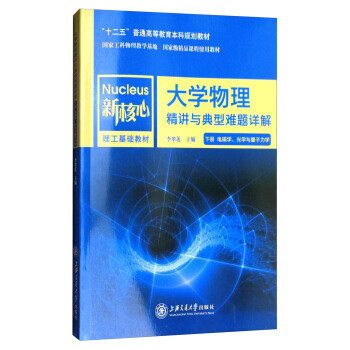
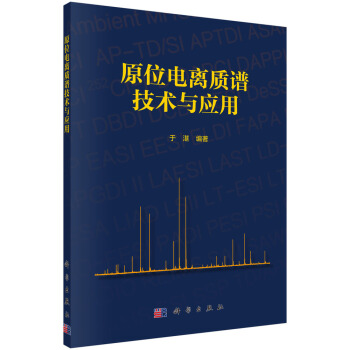
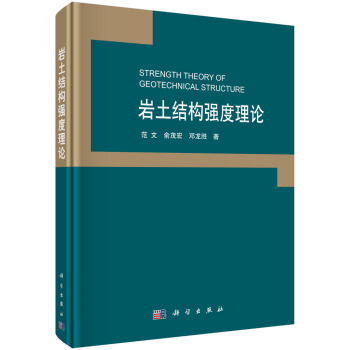
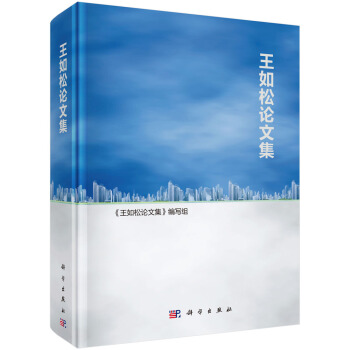


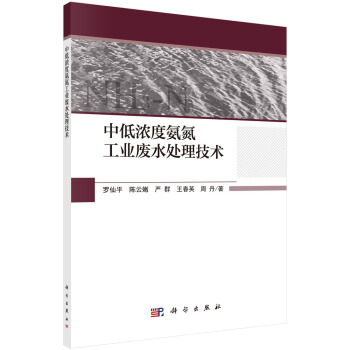
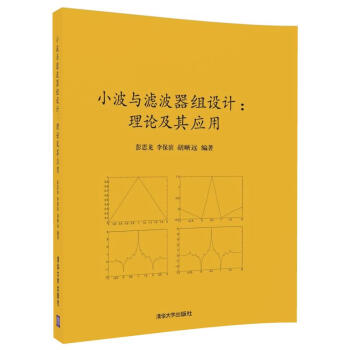
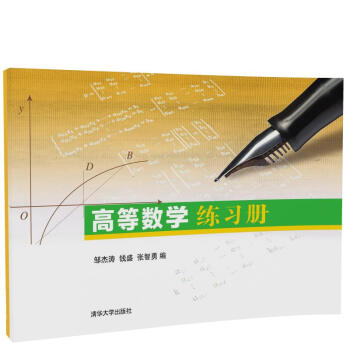
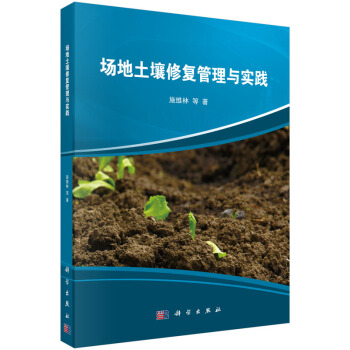
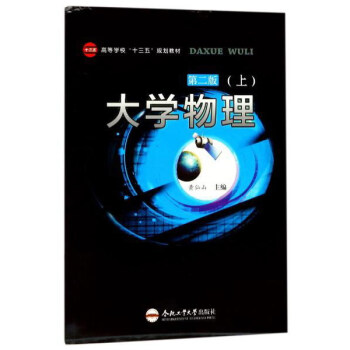
![數學模型在生態學的應用及研究(36) [The Application and Research of Mathematical Model in Ecology] pdf epub mobi 電子書 下載](https://pic.tinynews.org/12182894/591c1147Nc923bcca.jpg)
![數學模型在生態學的應用及研究(37) [The Application and Research of Mathematical Model in Ecology] pdf epub mobi 電子書 下載](https://pic.tinynews.org/12182920/591c114cN9972fe36.jpg)

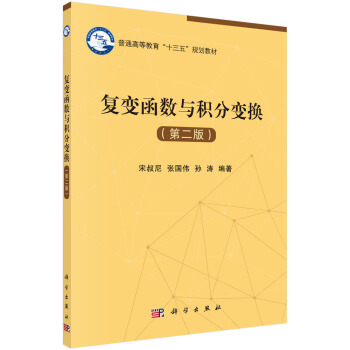

![細胞生物學實驗(第4版) [Cell Biology Experiments] pdf epub mobi 電子書 下載](https://pic.tinynews.org/12183453/5a501e71N1ab8c0cb.jpg)
